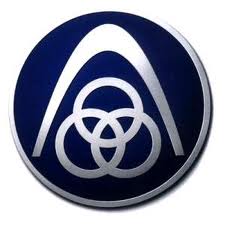 Spotlight on renewable energies. Combined strength drives innovations. Spotlight on renewable energies. Combined strength drives innovations.
ThyssenKrupp has set itself new innovation targets. Renewable energies, Industry 4.0, sustainable mobility and resource-conserving products are high on the innovation agenda. Chief Technology Officer Reinhold Achatz: “We are working hard to ensure that in the future ThyssenKrupp stands for sustainable products produced in a sustainable way.”
Transition to renewables as market of the future
ThyssenKrupp wants to play an important role in the transition to renewable energies. “Renewable energies have become an important part of the energy mix,” says Achatz. According to the International Energy Agency, electricity generation from renewable energies, including hydroelectric, will triple worldwide between 2012 and 2040.
ThyssenKrupp’s aim is to help manage the volatility of renewables, among other things through innovative storage technologies. Here too, the prospects are attractive: According to a study by the Boston Consulting Group, 330 gigawatts of additional storage capacity will be required by 2030. By way of comparison: Around 44 gigawatts of new wind power capacity was installed worldwide in 2014.
The Group is currently working to advance redox flow batteries, an existing technology in which electricity is stored as chemical energy in two large tanks. The tanks are filled with salts dissolved in inorganic acids. To charge or discharge the batteries, the fluid flows through electrochemical cells. The total active area of the cells determines the maximum output of the battery. ThyssenKrupp’s engineers want to increase the cell area – currently less than one square meter with an output of 80 watts – to 2.7 square meters. This would make it possible to build redox flow batteries with a power output of 20 megawatts which would reduce energy storage costs accordingly.
Water electrolysis is a storage technology in which water is separated into hydrogen and oxygen with the help of electricity. Hydrogen will play an important role in the energy transition, used directly in chemical processes and also as an energy source. Hydrogen as an energy source could be stored in the gas grid or in caverns and then used at times of low electricity supply. ThyssenKrupp has longstanding experience in electrolysis systems, such as for the production of chlorine. On this basis the Group is developing a system whose capital costs will probably be 3.5 to five times lower than competing solutions. At the same time the company is targeting an efficiency level of 80 percent.
Combined strength for breakthrough innovations
In research and development, ThyssenKrupp is banking on its combined strength as a diversified industrial group, what it calls cross-industry innovation. Achatz: “Nowadays, real technological leaps mainly happen at the interfaces between different industries rather than in the deep reaches of individual sectors.” By way of example he names the MULTI and Carbon2Chem projects.
The Carbon2Chem project is one such technological quantum leap. It is a collaborative project involving the Steel Europe business area, chemical plant engineers from the Industrial Solutions business area, and the TechCenter Control Technology. Further industrial partners from the chemical and energy sectors as well as research institutes and universities will be added.
The aim of the roughly 15-year project is to convert steel mill gases into valuable base chemicals such as ammonia and methanol. The process is based on the fact that steel mill gases already contain large amounts of the components of these base chemicals, such as carbon in the form of carbon monoxide and carbon dioxide (CO2) as well as nitrogen and hydrogen. In addition to energy from the steelmaking process, the chemical processes are to be powered by excess electricity from renewable sources. In this way the Carbon2Chem project will not only help stabilize the power grid and contribute to the energy transition, it would also allow a large part of a steel mill’s CO2 emissions to be converted.
Unveiled recently, MULTI is the world’s first multi-cab, cableless elevator system. The cabs are driven by linear motors. It is the same principle used for the Transrapid maglev train, which is powered by movable magnetic fields. This not only allows multiple cabs to travel in one shaft, it means they can also move horizontally. MULTI is a quantum leap in elevator technology. In addition to the Elevator business area, the TechCenter Control Technology, the TechCenter Carbon Composites, ThyssenKrupp System Engineering, ThyssenKrupp Rothe Erde for slewing rings and ThyssenKrupp Bilstein were all involved in the development. This combination of expertise, from elevator to linear motor to lightweight construction technology, is only available at ThyssenKrupp.
ThyssenKrupp is a diversified industrial group with traditional strengths in materials and a growing share of capital goods and services businesses. Around 155,000 employees in nearly 80 countries work with passion and technological expertise to develop high-quality products and intelligent industrial processes and services for sustainable progress. Their skills and commitment are the basis of our success. In fiscal year 2013/2014 ThyssenKrupp generated sales of around €41 billion.
With our engineering expertise in the areas Mechanical, Plant and Materials we enable our customers to gain an edge in the global market and manufacture innovative products in a cost- and resource-friendly way. For us, technical progress and innovations, allied with the combined strength of the Group, are key factors enabling us to follow the development trends on the global sales markets, grow on the markets of the future, and generate strong and stable earnings, cash flows and value growth.
|